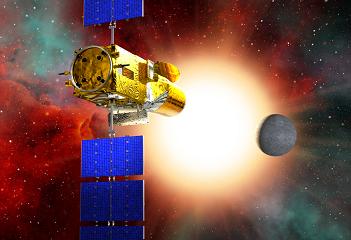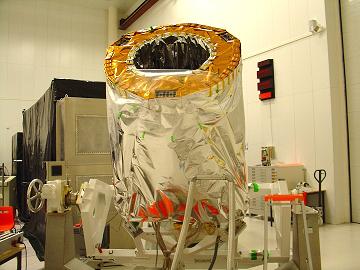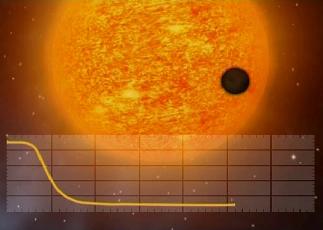Stellar seismology is a relatively new field of study. Since 1995, the ESA/NASA mission SOHO (SOlar Heliospheric Observatory) has pioneered the study of stellar seismology through observations of our own star, the Sun. Despite its name, stellar seismology is the study of stellar pressure waves and not stellar seismic activity (There is no such thing as seismic activity inside a star).
The COROT mission uses a similar approach to study other stars. Three stars similar to the Sun – known as HD499933, HD181420, and HD181906 – have been probed and starquakes have been detected.
Starquakes, or oscillations of distant stars, can be detected through variation in the light emitted by the star as sound waves hit the star’s surface.
This method reveals the internal structure of the star, and the patterns that the energy follows when transported from the core to the surface. These observations also allow astronomers to calculate the star’s mass, age, and chemical composition.
The COROT satellite, carrying a 27 cm diameter telescope, was launched in December 2006 by a Soyuz rocket from the Baikonur Cosmodrome. COROT is a 360 kg satellite and operates on a polar orbit at an altitude of 896 km. COROT is a mission lead by the French Space Agency (CNES); ESA, Austria, Belgium, Germany, Spain, and Brazil also contributed to the mission. The main objectives of the mission are to search for exoplanets and to study stellar interiors.
The telescope onboard COROT cannot see exoplanets directly. The method employed by COROT to discover exoplanets is to measure variations in the luminosity of stars. Planets cause such variations as they pass in front of their parent stars. These celestial alignments are called planetary transits. Obviously, the smaller the planet, the higher the telescope’s sensitivity must be in order to detect it.
Ground telescopes have detected more than 200 exoplanets to date (all of them gas giants). COROT continues the search for new worlds outside of our solar system from above the Earth’s atmosphere. Without the distorting effects of the atmosphere, COROT is able to find planets that are made out of rock and are smaller than the gas giants. COROT marks the first step in understanding other solar systems, how planets are formed, and how life can develop on these planets.
From February 2 to February 5, 2009, the first COROT International Symposium will be held in Paris, France.












 Subscribe to our RSS feed
Subscribe to our RSS feed











There are no comments.
Add A Comment